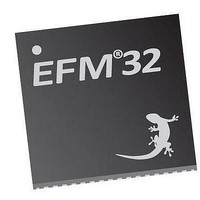EFM32-TG822F32-SK Energy Micro, EFM32-TG822F32-SK Datasheet - Page 61

EFM32-TG822F32-SK
Manufacturer Part Number
EFM32-TG822F32-SK
Description
MCU, MPU & DSP Development Tools TG822 Sample Kit
Manufacturer
Energy Micro
Datasheet
1.EFM32-TG822F32-SK.pdf
(64 pages)
Specifications of EFM32-TG822F32-SK
Processor To Be Evaluated
EFM32
Lead Free Status / RoHS Status
Lead free / RoHS Compliant
Available stocks
Company
Part Number
Manufacturer
Quantity
Price
Company:
Part Number:
EFM32-TG822F32-SK
Manufacturer:
EnergyMi
Quantity:
17
...the world's most energy friendly microcontrollers
List of Figures
2.1. Block Diagram ....................................................................................................................................... 3
2.2. EFM32TG822 Memory Map with largest RAM and Flash sizes ........................................................................ 8
3.1. EM2 current consumption. RTC prescaled to 1kHz, 32 kHz LFRCO. .............................................................. 12
3.2. EM3 current consumption. ..................................................................................................................... 12
3.3. EM4 current consumption. ..................................................................................................................... 12
3.4. Typical Low-Level Output Current, 2V Supply Voltage .................................................................................. 16
3.5. Typical High-Level Output Current, 2V Supply Voltage ................................................................................. 17
3.6. Typical Low-Level Output Current, 3V Supply Voltage .................................................................................. 18
3.7. Typical High-Level Output Current, 3V Supply Voltage ................................................................................. 19
3.8. Typical Low-Level Output Current, 3.8V Supply Voltage ............................................................................... 20
3.9. Typical High-Level Output Current, 3.8V Supply Voltage ............................................................................... 21
3.10. Minimum Load Capacitance (C
) Requirement For Safe Crystal Startup ................................................... 22
LFXOL
3.11. Calibrated LFRCO Frequency vs Temperature and Supply Voltage .............................................................. 24
3.12. Integral Non-Linearity (INL) ................................................................................................................... 29
3.13. Differential Non-Linearity (DNL) .............................................................................................................. 29
3.14. ADC Frequency Spectrum, Vdd = 3V, Temp = 25° ................................................................................... 30
3.15. ADC Integral Linearity Error vs Code, Vdd = 3V, Temp = 25° ..................................................................... 31
3.16. ADC Differential Linearity Error vs Code, Vdd = 3V, Temp = 25° ................................................................. 32
3.17. ADC Absolute Offset, Common Mode = Vdd /2 ........................................................................................ 33
3.18. ADC Dynamic Performance vs Temperature for all ADC References, Vdd = 3V .............................................. 33
3.19. OPAMP Common Mode Rejection Ratio ................................................................................................. 37
3.20. OPAMP Positive Power Supply Rejection Ratio ........................................................................................ 37
3.21. OPAMP Negative Power Supply Rejection Ratio ...................................................................................... 37
3.22. OPAMP Voltage Noise Spectral Density (Unity Gain) V
=1V ..................................................................... 38
out
3.23. OPAMP Voltage Noise Spectral Density (Non-Unity Gain) .......................................................................... 38
3.24. Typical ACMP Characteristics ............................................................................................................... 40
4.1. EFM32TG822 Pinout (top view, not to scale) .............................................................................................. 44
4.2. Opamp Pinout ...................................................................................................................................... 50
4.3. TQFP48 .............................................................................................................................................. 51
5.1. TQFP48 PCB Land Pattern ..................................................................................................................... 53
5.2. TQFP48 PCB Solder Mask ..................................................................................................................... 54
5.3. TQFP48 PCB Stencil Design ................................................................................................................... 55
6.1. Example Chip Marking ........................................................................................................................... 56
www.energymicro.com
2012-02-27 - EFM32TG822FXX - d0052_Rev0.95
61






